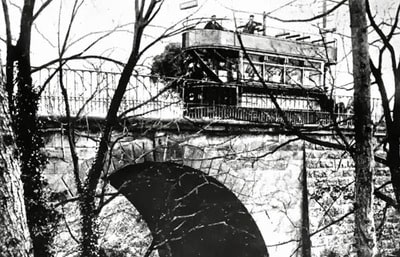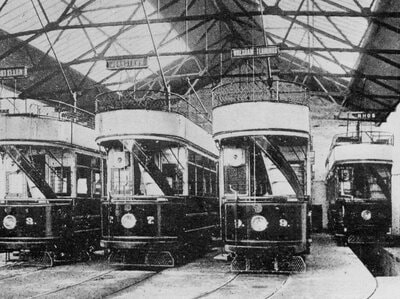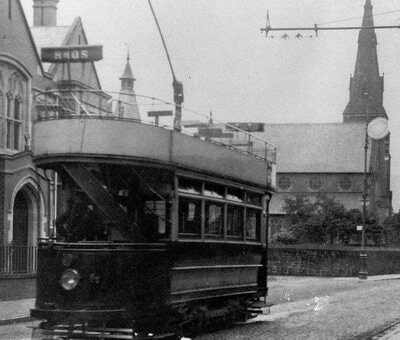This is the first in what we hope will be a regular feature from Graham Lloyd, founder of wrexham-history.com. He has very kindly provided us with the article and photographs.
The muffled roar of the internal combustion engine dominates the roads in and around Wrexham these days. At one time the rattle of trams was heard above all else.
Firstly, this is the story of how Wrexham and District Electric Tramways operated an electric tramway service in Wrexham between 1903 and 1927:
Beginnings

In October 1876, a single line operated between New Inn, Johnstown and the toll bar on the outskirts of Wrexham. On 1st November of that year, the toll bar was removed and the line was also extended to the town centre. Wrexham and District Electric Tramways, a company set up by the British Electric Traction group, acquired the line and its operating company in 1900. They converted the line to 3’6″ gauge and electrified it. The work was carried out by Dick, Kerr & Co and, following an inspection by Lt Col Sir Horatio Arthur Yorke from the Board of Trade, services started on 4th April, 1903.
A new depot was provided at Johnstown at the corner of Offa Street and Maelor Road. Which was constructed by Jenkins & Jones of Johnstown of Ruabon brick. The depot also survived long after the closure of the tramway. One subsequent use being a bus garage for the Crosville Company. It was finally demolished sometime between 2005 and 2010.
Electricity at 550V was obtained from the Wrexham Corporation power station in Willow Road. A 21-year agreement was put in place at the opening of the tramway for the rates at which the company would also be charged for its use of power. Drivers were encouraged to operate economic driving practices to minimise the expense to the company. When this agreement expired, the company was forced into an annual contract with the prospect of yearly increases in the unit charge.
Expansion
The service was extended on 26th May, 1903 past Wrexham GWR railway station to the Turf Hotel. From Johnstown, the line was taken into the new development at the west of the Wrexham-Ruabon road reaching Duke Street, Rhosllanerchrugog by the end of 1904. Two routes were planned, but only one was ever opened. A second route was also designed to run along Yorke Street, but was never installed.

Moreover, in 1912, the company started experimenting with bus operation. Which was soon realised that this was where most of the profits were going to be made. In recognition of this in 1914, the company changed its name to Wrexham and District Transport Company Limited. Any plans for the expansion of the bus services, were put on hold with the outbreak of the First World War in the same year. The motorbuses that the company had acquired were requisitioned by the armed forces.
After the war, the company suffered from competition as the military authorities disposed of much surplus equipment. Wrexham Council issued hackney licences freely to anyone requesting them.
Fleet
The company used 10 tramcars built by Brush Electrical Engineering Company of Loughborough. The livery was red and cream. The vehicles could seat 26 on the upper deck, and 20 inside on the lower deck.
Closure
The system was finally closed on 31st March, 1927.
Two Trams Remain

In 2005, Wrexham Museum acquired two of the town’s original electric trams which had come into use in 1903 to replace the horse-drawn ones. Vic Cleveley discovered the tram bodies at the Brow Golf Club in Ellesmere, Shropshire. The owner, Alf Strange, had bought them in 1970 with a view to restoring them himself, but no work had been carried out. One of the trams was in a very bad state while the other seems to have been used as a shed for the golf clubs groundsmen. Vic alerted Wrexham Museum to the poor state of the vehicles and it was agreed for them to be handed over to the museum for restoration.
From the original 10 trams, housed at the WETC depot in Johnstown, these are the only two known to have survived. The museum plans were to strip the poorer one for parts to make one complete carriage for display. To date, no work has been carried out to restore either of the trams. However, they still sit out in the open at Bersham Colliery.
Many thanks to Graham Lloyd. Please visit his website www.wrexham-history.com for more great features on Wrexham history.

